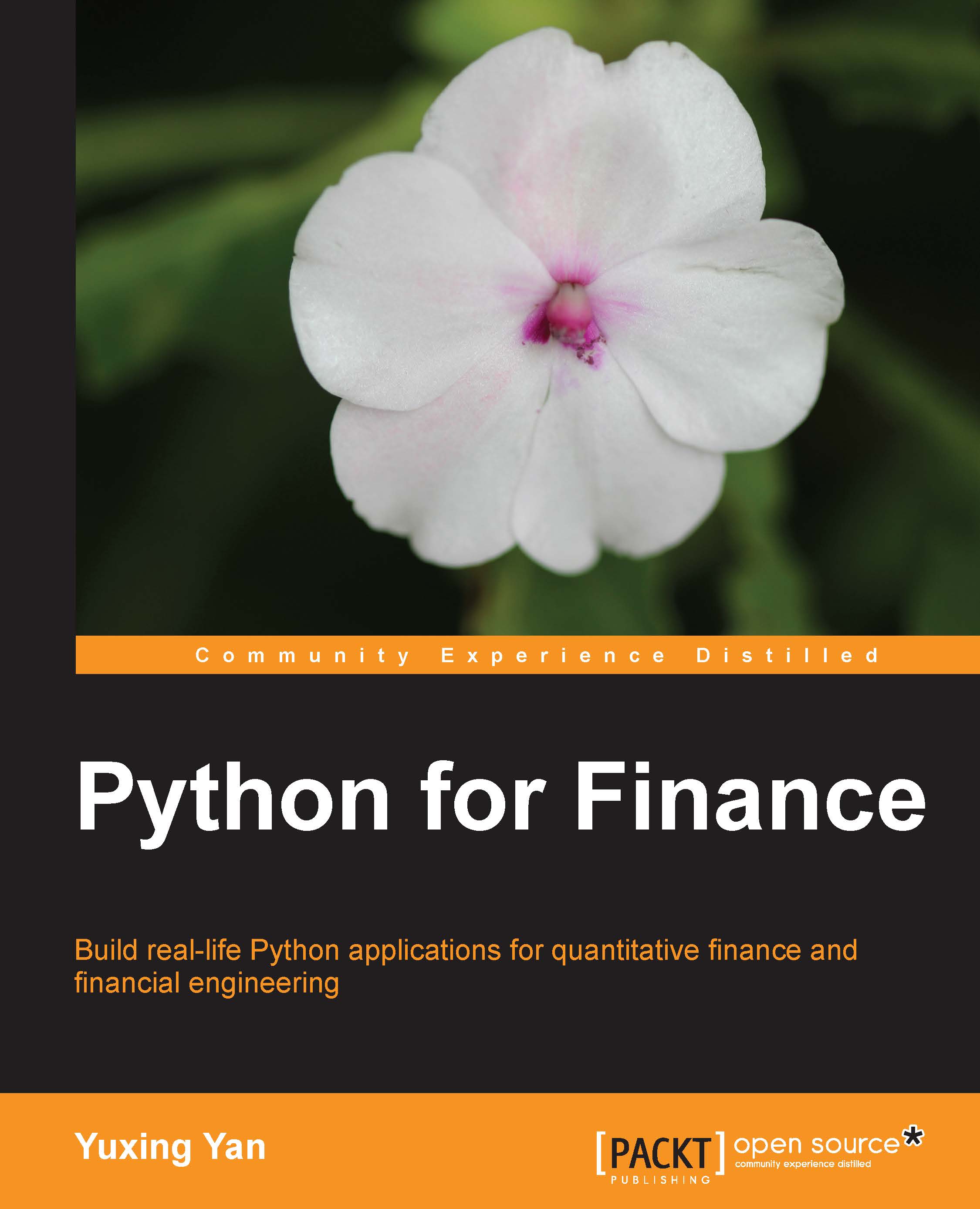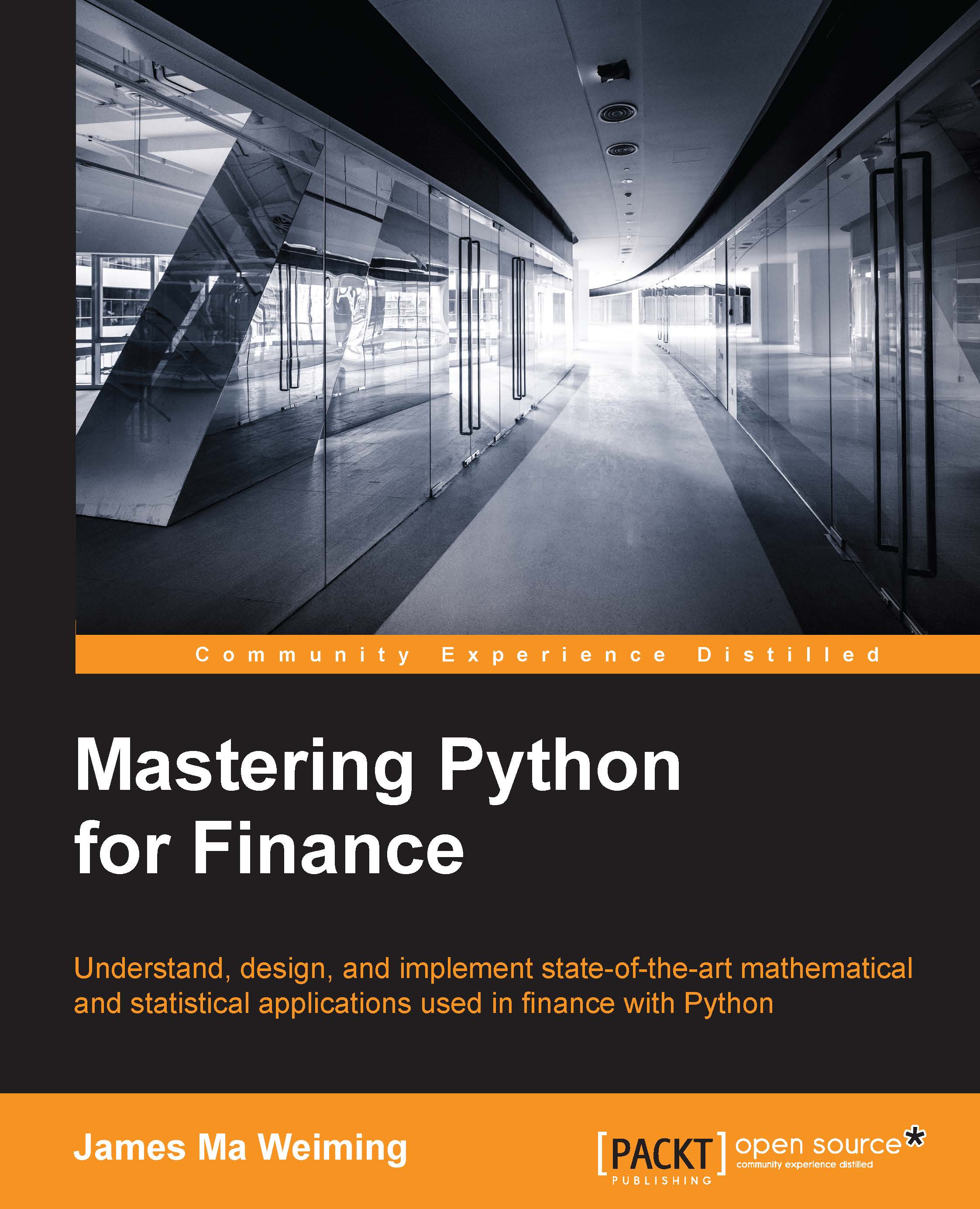Yuxing Yan graduated from McGill University with a PhD in finance. Over the years, he has been teaching various finance courses at eight universities: McGill University and Wilfrid Laurier University (in Canada), Nanyang Technological University (in Singapore), Loyola University of Maryland, UMUC, Hofstra University, University at Buffalo, and Canisius College (in the US). His research and teaching areas include: market microstructure, open-source finance and financial data analytics. He has 22 publications including papers published in the Journal of Accounting and Finance, Journal of Banking and Finance, Journal of Empirical Finance, Real Estate Review, Pacific Basin Finance Journal, Applied Financial Economics, and Annals of Operations Research. He is good at several computer languages, such as SAS, R, Python, Matlab, and C. His four books are related to applying two pieces of open-source software to finance: Python for Finance (2014), Python for Finance (2nd ed., expected 2017), Python for Finance (Chinese version, expected 2017), and Financial Modeling Using R (2016). In addition, he is an expert on data, especially on financial databases. From 2003 to 2010, he worked at Wharton School as a consultant, helping researchers with their programs and data issues. In 2007, he published a book titled Financial Databases (with S.W. Zhu). This book is written in Chinese. Currently, he is writing a new book called Financial Modeling Using Excel — in an R-Assisted Learning Environment. The phrase "R-Assisted" distinguishes it from other similar books related to Excel and financial modeling. New features include using a huge amount of public data related to economics, finance, and accounting; an efficient way to retrieve data: 3 seconds for each time series; a free financial calculator, showing 50 financial formulas instantly, 300 websites, 100 YouTube videos, 80 references, paperless for homework, midterms, and final exams; easy to extend for instructors; and especially, no need to learn R.
Read more
 United States
United States
 Great Britain
Great Britain
 India
India
 Germany
Germany
 France
France
 Canada
Canada
 Russia
Russia
 Spain
Spain
 Brazil
Brazil
 Australia
Australia
 Singapore
Singapore
 Canary Islands
Canary Islands
 Hungary
Hungary
 Ukraine
Ukraine
 Luxembourg
Luxembourg
 Estonia
Estonia
 Lithuania
Lithuania
 South Korea
South Korea
 Turkey
Turkey
 Switzerland
Switzerland
 Colombia
Colombia
 Taiwan
Taiwan
 Chile
Chile
 Norway
Norway
 Ecuador
Ecuador
 Indonesia
Indonesia
 New Zealand
New Zealand
 Cyprus
Cyprus
 Denmark
Denmark
 Finland
Finland
 Poland
Poland
 Malta
Malta
 Czechia
Czechia
 Austria
Austria
 Sweden
Sweden
 Italy
Italy
 Egypt
Egypt
 Belgium
Belgium
 Portugal
Portugal
 Slovenia
Slovenia
 Ireland
Ireland
 Romania
Romania
 Greece
Greece
 Argentina
Argentina
 Netherlands
Netherlands
 Bulgaria
Bulgaria
 Latvia
Latvia
 South Africa
South Africa
 Malaysia
Malaysia
 Japan
Japan
 Slovakia
Slovakia
 Philippines
Philippines
 Mexico
Mexico
 Thailand
Thailand

















